Pitching a tent in Banff National Park is a splendid and affordable way to explore the Canadian Rockies. From lovely campsites throughout the park, visitors can access some of the best trails and endless natural beauty.
Life bursts throughout the park as the snow melts in the summer and everyone wakes up from their winter daze. Expect frequent wildlife sightings, an explosion of wildflowers, comfortable temperatures, turquoise lakes, and many jaw-dropping hikes in Banff.
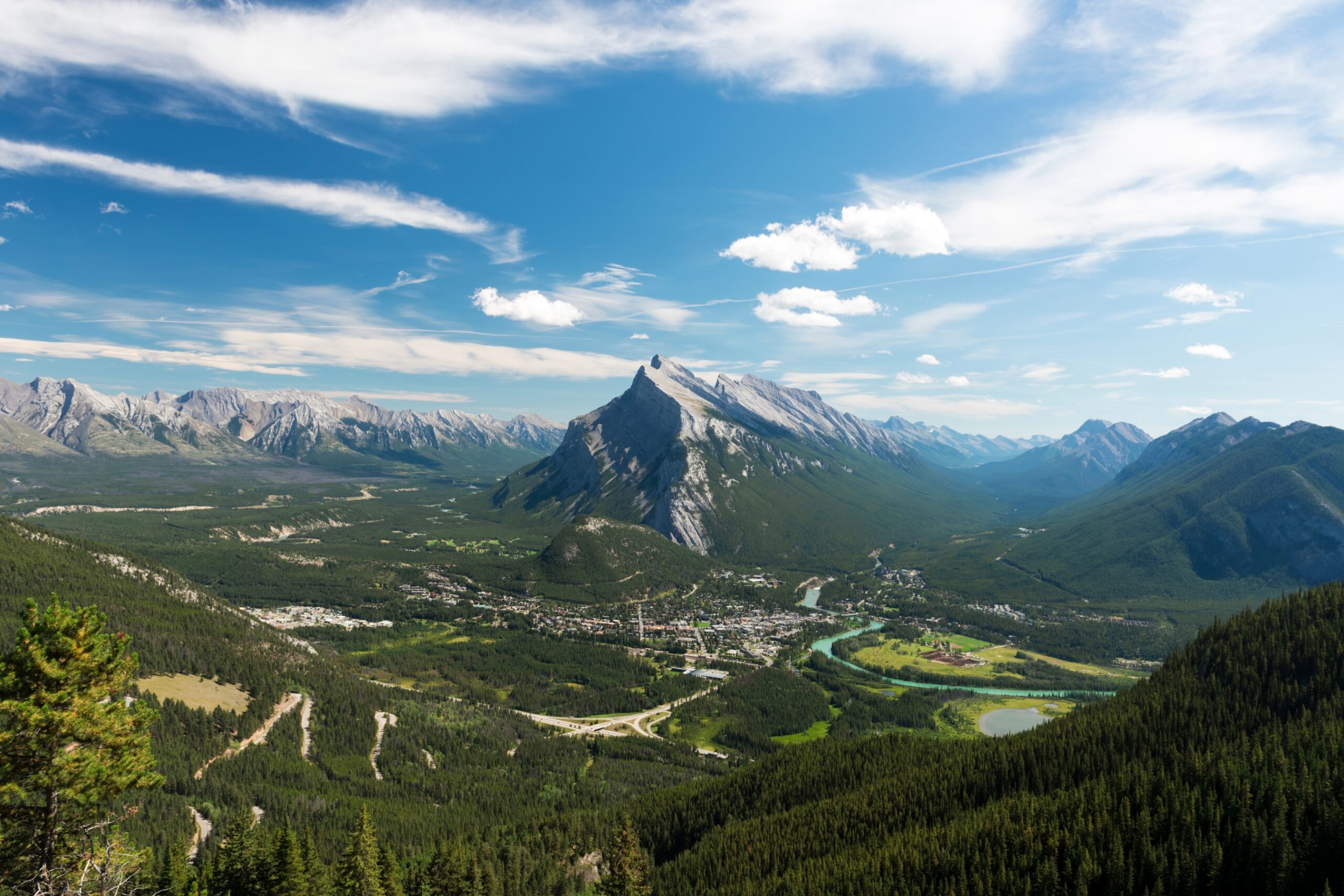
Camping in the park is perhaps the best way to experience all of this, and it is far less expensive than the hotels that fill up in the summer. If you want to visit Banff on a budget, camping is your best option. However, camping in Banff requires planning as the park is very far from a secret, and the best campsites are booked months in advance, often as soon as camping reservations are released. Below you’ll find our best camping tips, where to camp in Banff, and what to do for a last-minute camping trip.
Parks Canada will begin accepting reservations for 2024 in January. Launch dates vary by location, but most locations begin accepting reservations on January 26, 2024.
Various Campsite Types in Banff
Frontcountry Campsites
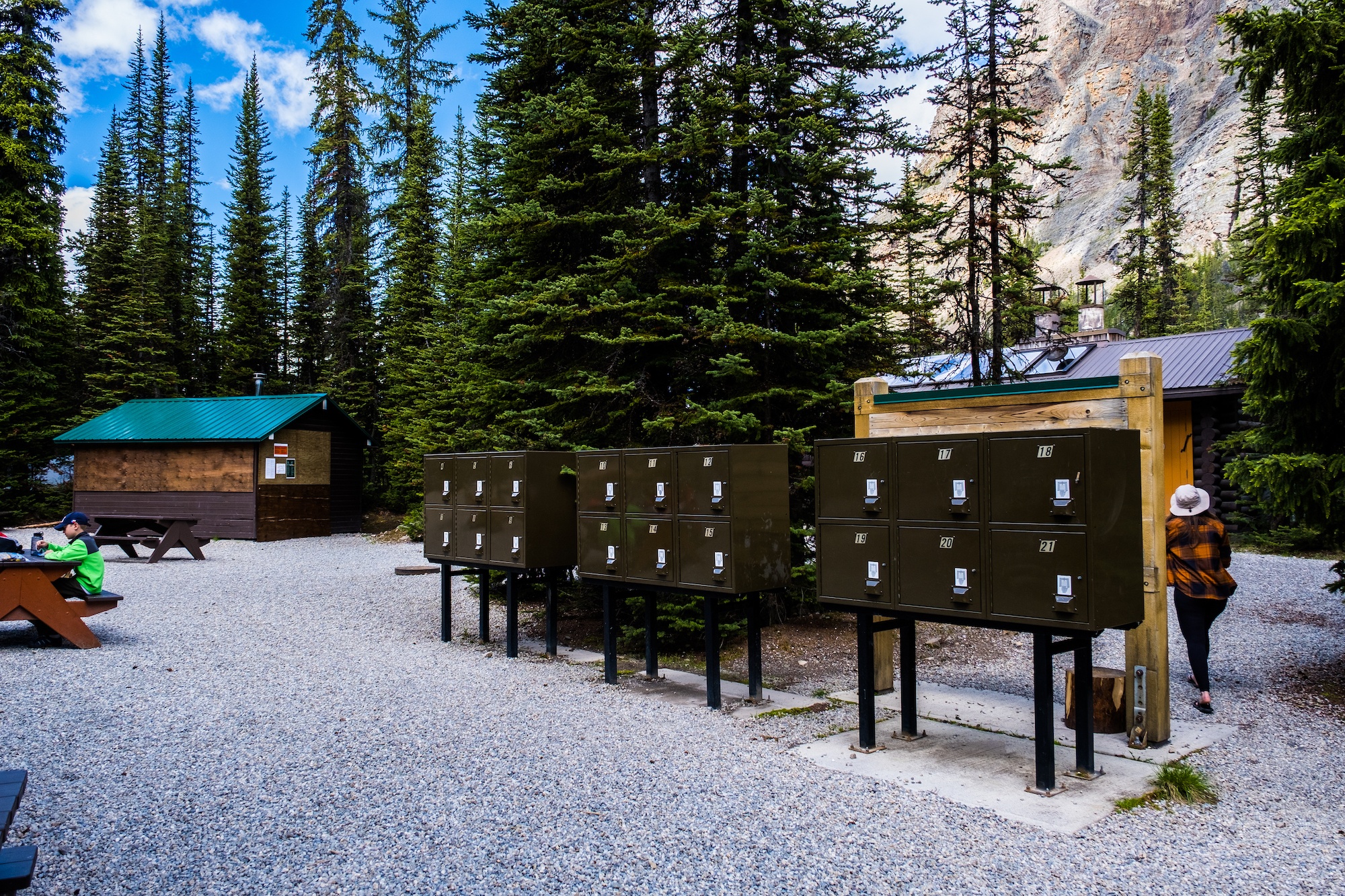
Frontcountry Campgrounds are the most common campgrounds in Banff and where most people will spend their time. They are accessible via car or a short walk. This includes campgrounds strictly for tents and those accommodating RVs and camper vans. Many of the campsites have facilities that include toilets, kitchen areas, and showers.
Several Banff campgrounds offer fully-equipped campsites with everything you could need. Tunnel Mountain and Two Jack even have oTENTiks, which are large A-frame tents on raised wood platforms with beds and electricity. Most of the serviced sites require a reservation in advance.
However, several front-country campsites in the park operate on a first-come-first-serve basis. So, even those with last-minute plans can camp in the park. These sites generally have fewer facilities and are farther away from the major sites, but tend to be more intimate. Mosquito Creek, Protection Mountain, and Silverhorn Creek are examples of first-come-first-serve campsites.
Backcountry Campsites
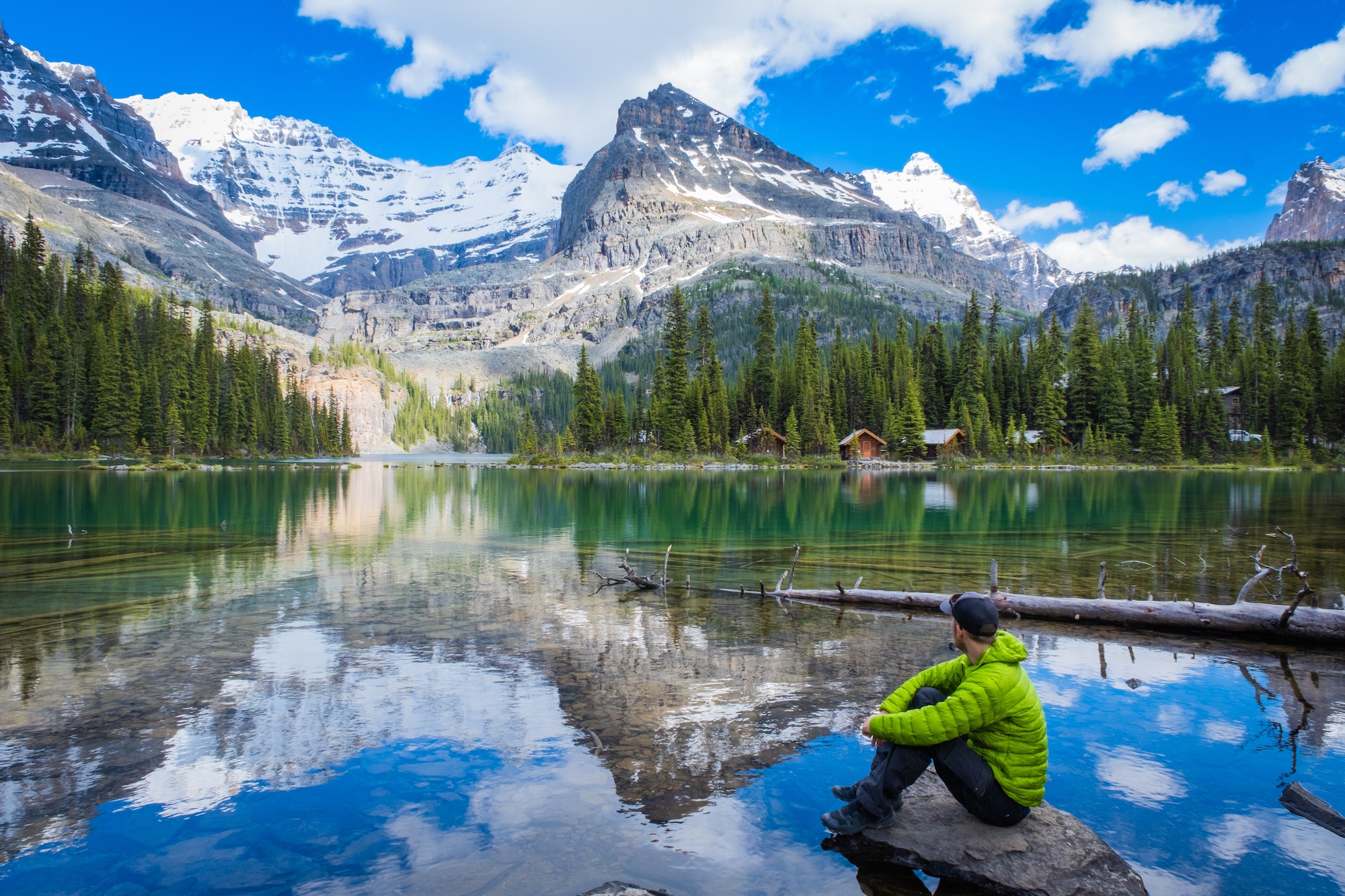
Scattered throughout the park is an extensive network of backcountry campsites. Backcountry campsites are removed from roads and can only be accessed by hiking or helicopter—granted, the helicopter flight services Mount Assiniboine Provincial Park.
A backcountry trip through the park and staying in these campsites is an astounding way for visitors to immerse themselves in the natural wonders of the Canadian Rockies. Some of the best hikes in Banff and the Canadian Rockies occur from these campgrounds, so reservations go fast.
Reservations at the most popular routes require booking well in advance. While there is a mix of popular backcountry hikes around the Rockies, the most well-known backcountry trips occur in the surrounding national and provincial parks. These famous hikes and backcountry sites include Berg Lake Trail, the Rockwall Trail in Kootenay National Park, and Lake O’Hara. A canoe camping trip around Maligne Lake in Jasper is another popular trip that books fast.
The popular campsites require reservations and do not operate on a first-come-first-serve basis. However, if you’re open to taking the road less traveled, you can still find many backcountry campsites that remain relatively unused. Most backcountry campsites in Banff National Park have kitchen shelters, drop toilets, potable water, fire pits, bear bins, and level tent pads.
Random Campsites
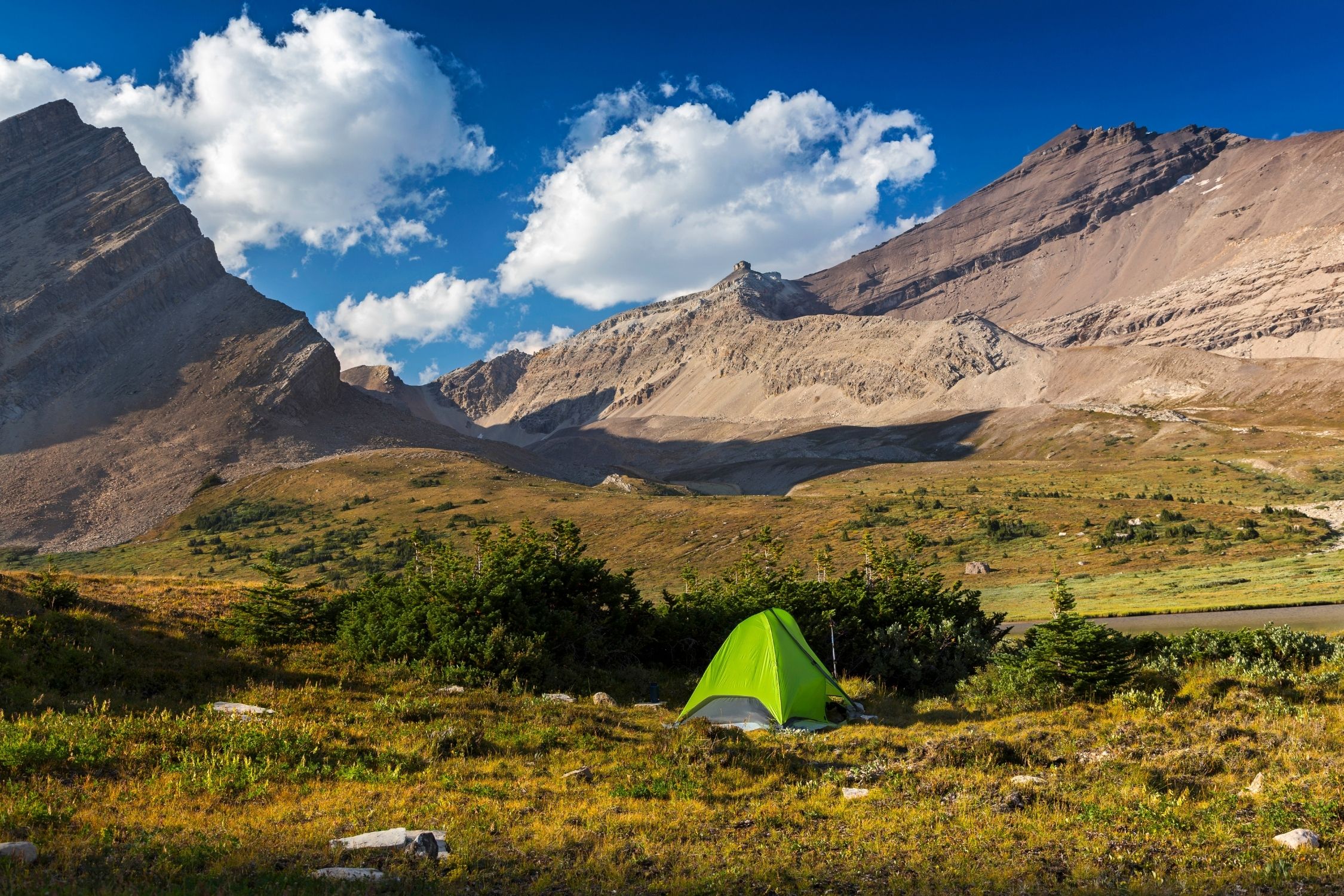
This is the least common type of Banff camping, and we’d generally advise it for people who have already spent time camping in Banff and looking for new areas to explore. Random camping areas are far from Banff’s most popular trails and sights.
They’re also deep in the backcountry, where you’re more likely to encounter wildlife and will be far away from a cell signal or help. Parks Canada does allow random camping in the most remote regions of the park. However, you can’t just pull off to the side of the road, walk just off a popular trail, or camp near the campground in Banff.
You can also bivy in approved locations for several climbing and mountaineering objectives in the park. Random camping in Banff still requires you to have a backcountry permit and register with Parks Canada the location of your planned campsite.
Guidelines for random camping in Banff require you to camp at least 5.0 km. from a trailhead or campground, 50m from any trail, and 70m from a water source. Fires are not allowed. Most random camping zones are in the eastern region of the park.
Banff Campground Basics
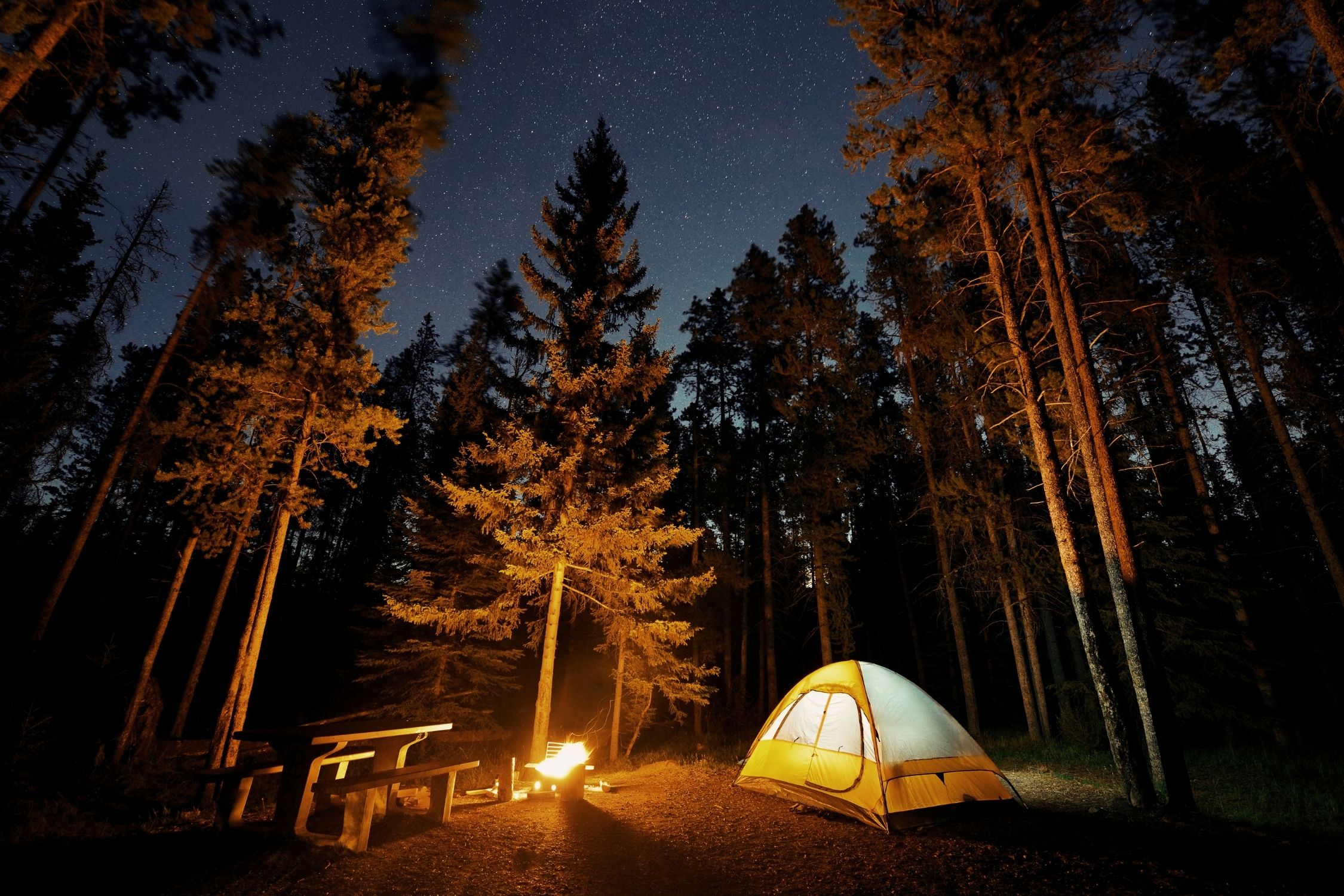
If you wish to camp in any National Park, you need the following.
- A National Park Pass: We buy ours annually as locals, but if you plan to visit for an extended period, buying the Parks Canada Discovery Pass over daily passes makes far more sense.
- A Camping Permit: Some campgrounds require advanced reservations that can be made via phone or online. Other campsites are on a first-come, first-served basis, where you register and retrieve your permit at the site. (Make sure to carry enough cash if you opt for the latter.) Even if you have plans for random camping that still requires a permit.
- A Fire Permit: Many campsites have individual pits and allow for campfires. They cost $11 per site per night, so bring enough cash to pay for the permit at the campsite.
- To Reserve Campsites in Banff, you should check the Parks Canada Reservation site when they open reservations. A note that the popular ones go fast, especially in July and August, and you’ll want to have a plan when booking. When we say fast, it is usually within the first hour of reservations opening.
The Best Banff Campgrounds
Most visitors will have the greatest enjoyment with the front country Banff campgrounds. This is not a comprehensive overview of every campsite in Banff, and we suggest you visit Parks Canada for a full overview. It’s also the best way to reserve a campsite, which you should do unless this is a last-minute trip.
Tunnel Mountain Campgrounds
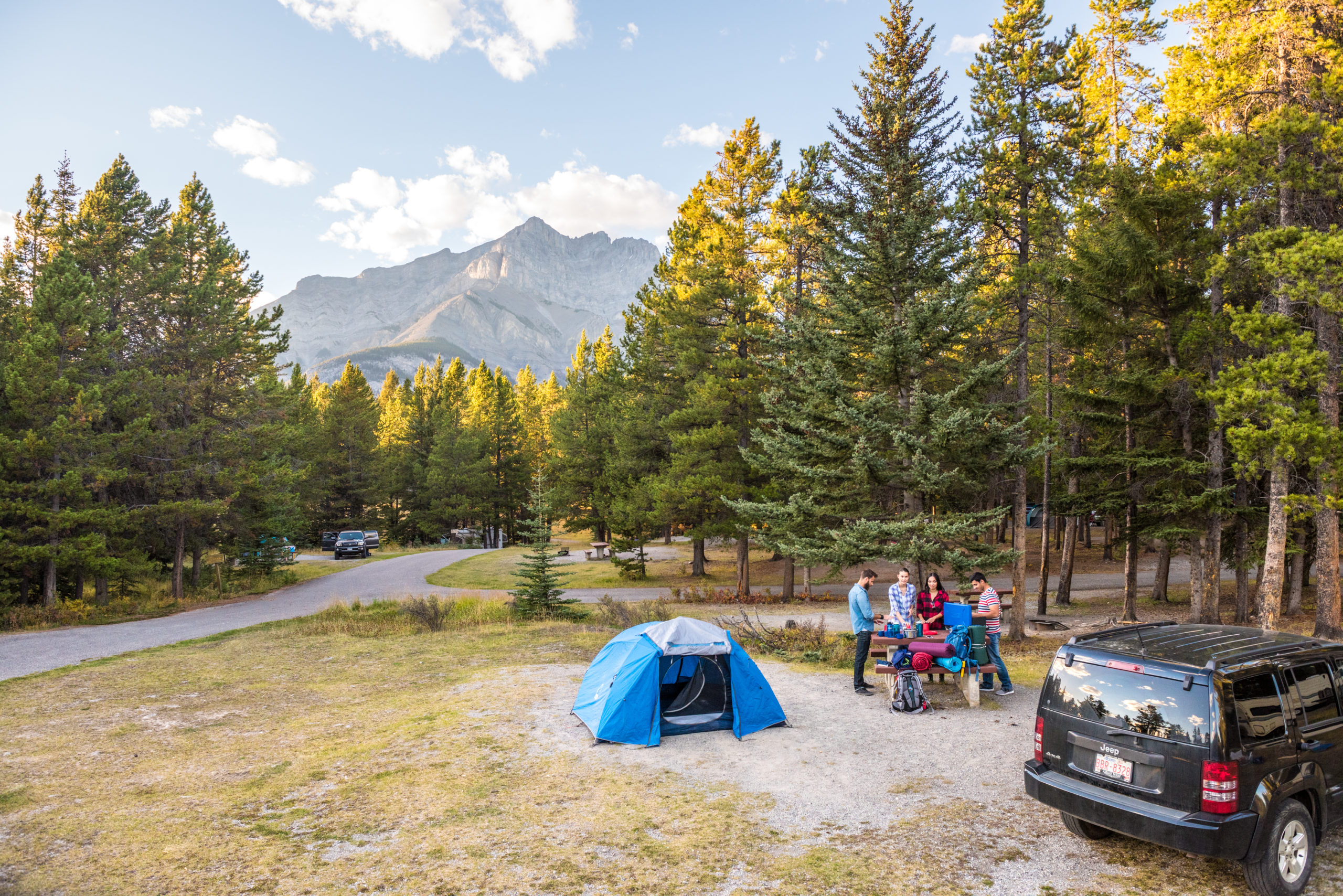
This is a series of Banff campgrounds located at the base of Tunnel Mountain. If you want convenient access to the town of Banff, nice facilities, and a beautiful campsite. Just because the campground is just outside town does not detract from its natural beauty or opportunity to spot wildlife.
In fact, the campground is famous as visitors spot elk, bears, and occasionally the Bow Valley wolf pack every year. Nature is quite literally at the doorstep in Banff; because of this, it is vitally important that campers practice proper wildlife awareness.
The three separate campgrounds, Tunnel Mountain Campground I, II, and Trailer Couter, are adjacent. These are the best facilities for camping in Banff, and the Tunnel Mountain Campgrounds are the only campsites that offer electricity hookups. Most importantly, they also have hot showers, which are a pretty sweet deal and not found at all the campgrounds in the park.
The Tunnel Mountain Campground has over 700 sites, so it can sometimes feel like you’re in a parking lot. Tunnel Mountain Trailer Court is the least attractive, designed for large motorcoaches and RVs. So if you’re camping in a tent or van, opting for other campgrounds or Two Jack Lake is a better choice. A big plus to this campground is the free shuttle bus to town, which Parks Canada operates.
Tunnel Mountain Campground Details
- Operating dates:
- Tunnel Mtn Village I: May 9 to October 6
- Tunnel Mtn Village II: Year Round
- Tunnel Mtn Village II oTENTik: May 9 to October 15
- Tunnel Mtn Trailer Court: May 9 to October 6
- Reservation: Required
- Amenities: Hot showers, flush toilet, outdoor theatre, sanitation dump, hookups, disabled access, fire pits, food lockers, potable water, sheltered camp kitchens
- Fees:
- Tunnel Mountain unserviced (washroom building having toilets and showers) — $30.50
- Tunnel Mountain electrical — $36.00
- Tunnel Mountain water, sewer, and electrical — $42.50
- Tunnel Mountain Village II oTENTik — $128
- Number of sites: 1,148 mixed sites
Two Jack Lake Campground
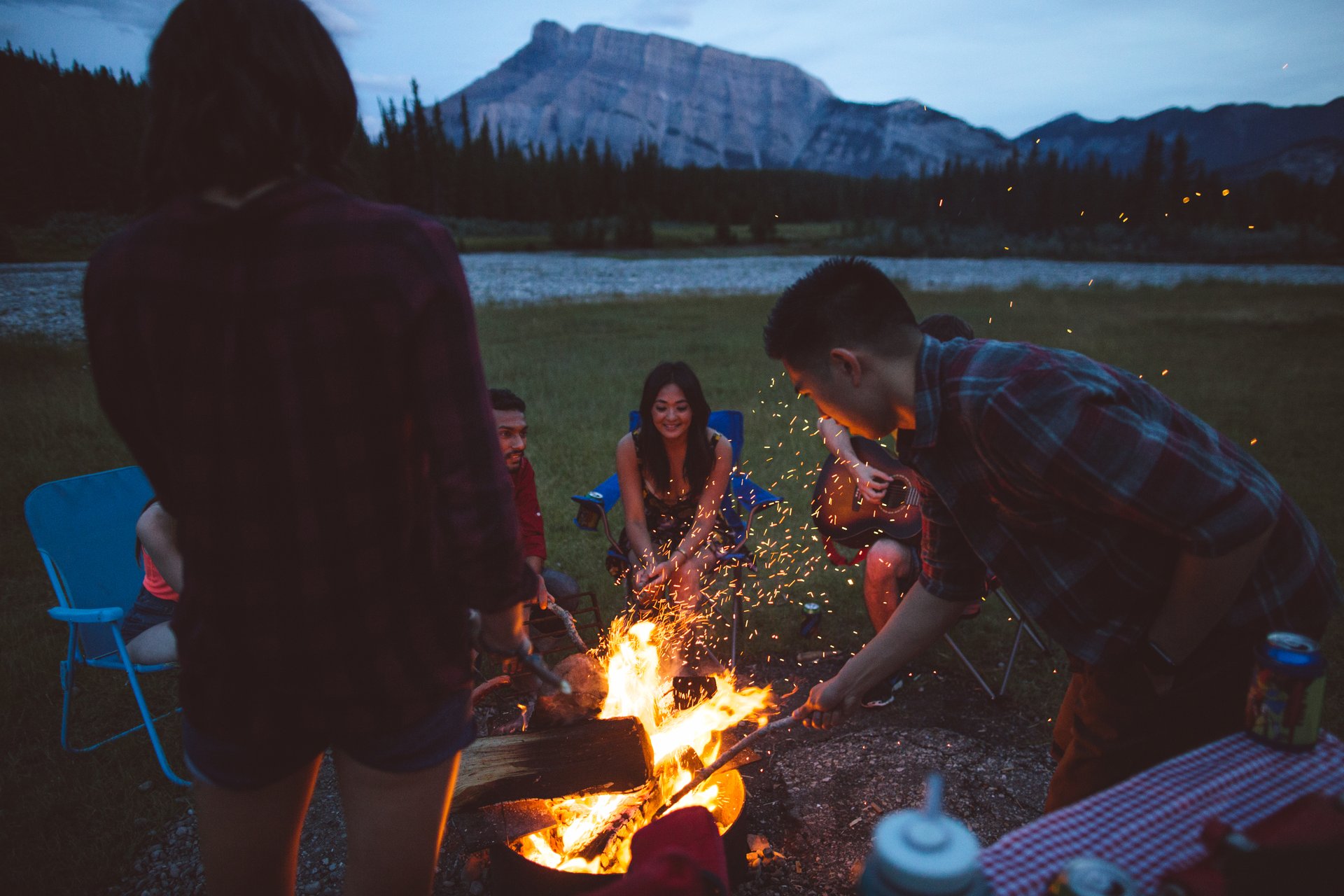
Two Jack Lake Campgrounds are the next closest campgrounds to the town of Banff. These campgrounds have a more natural feel, and the sites are well spread out. Two campgrounds are located here, the more desirable Two Jack Lakeside Campground and the Two Jack Campground Main.
The Lakeside Campground is smaller, has hot showers, and includes several choice campsites on Two Jack Lake’s banks. You’ll have to be pretty lucky to score a reservation at those sites. Try as soon as reservations open. However, the whole campground is wonderful, as Two Jack Lake is gorgeous, and nearby Lake Minnewanka is good for fishing, water sports, and hiking.
The Two Jack Lakeside campground also has several equipped campsites for $74.75 a night and includes everything you need for camping. These equipped campsites have a 6-person tent, 6 sleeping pads, a stove, propane, and a lantern. Visitors only need a sleeping bag, food, and hiking clothes.
Two Jack Lake is one of our favorite spots for sunsets, easy hikes, and stand-up paddleboarding in Banff. If you can camp in Banff here, consider yourself lucky.
Two Jack Lake Campground Details
- Operating dates:
- Two Jack Main: June 20 to September 2
- Two Jack Lakeside: May 23 to October 6
- Reservation: Required
- Amenities: Hot showers, flush toilet, sanitation dump, disabled access, fire pits, food lockers, potable water, sheltered camp kitchens
- Fees:
- Two Jack Main Equipped Campsites: $78.00
- Two Jack Main: $24.00
- Two Jack Lakeside: $30.50
- Number of sites: 455 mixed sites between Two Jack Lakeside and Two Jack Main
Johnston Canyon Campground
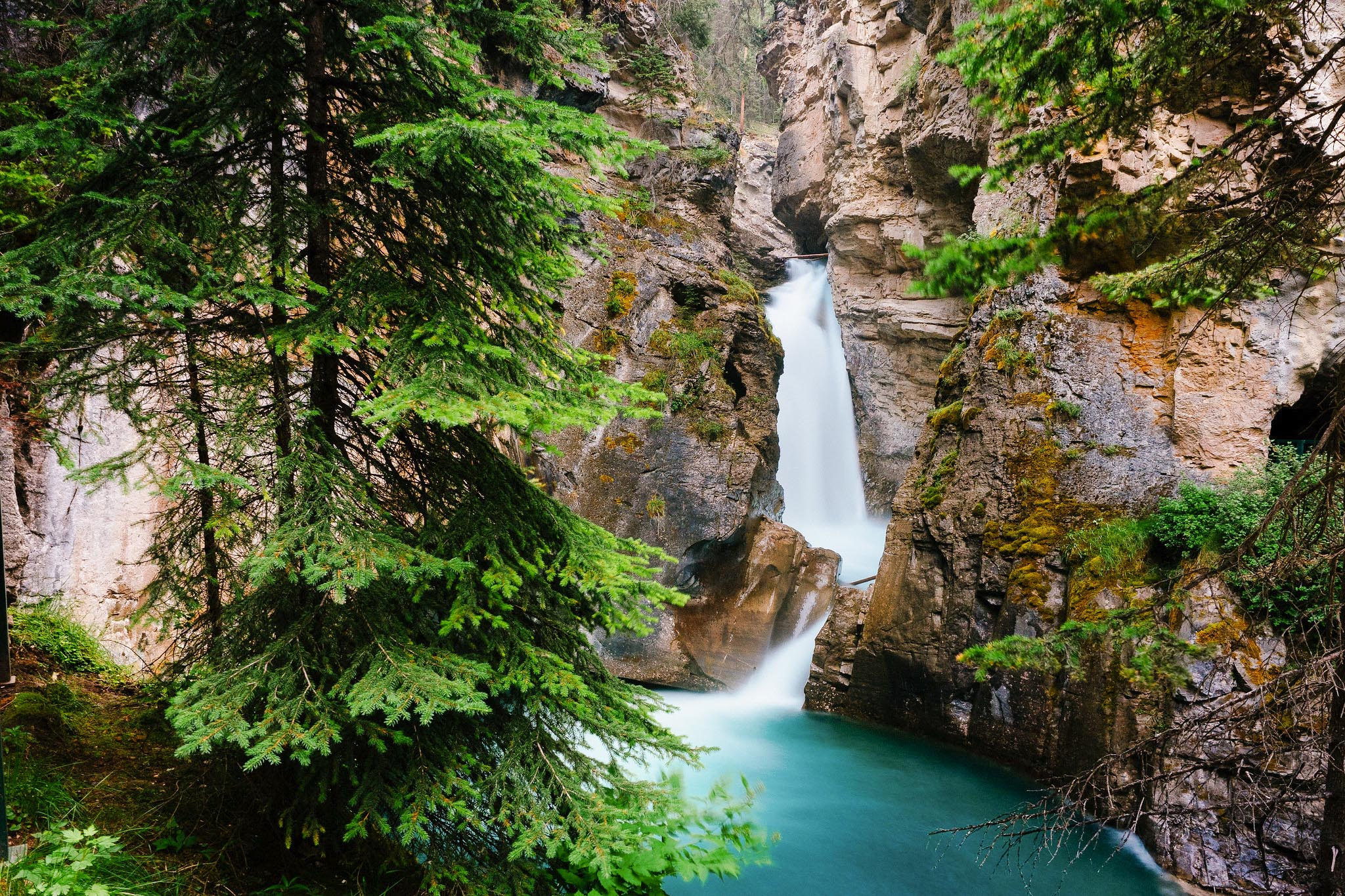
Just off the Bow Valley Parkway and a half hour from Banff, the Johnston Canyon Campground sits at the trailhead of one of the most popular hikes in Banff. We love the Johnston Canyon Campground for its quiet location along the Bow Valley Parkway.
The campsite also has showers, flush toilets, and fire pits, including firewood with your fire permit. There are three prime campsites right along Johnston Creek if you want to fall asleep to the sounds of rushing water. If you camp here, take advantage of the location and take an early morning hike through Johnston Canyon.
Johnston Canyon Campground Details
- Operating dates: May 23 to September 22
- Reservations: Required
- Amenities: Hot showers, flush toilet, sanitation dump, disabled access, fire pits, food lockers, potable water, sheltered camp kitchens
- Fees: $30.50
- Number of sites: 132
Castle Mountain Campground
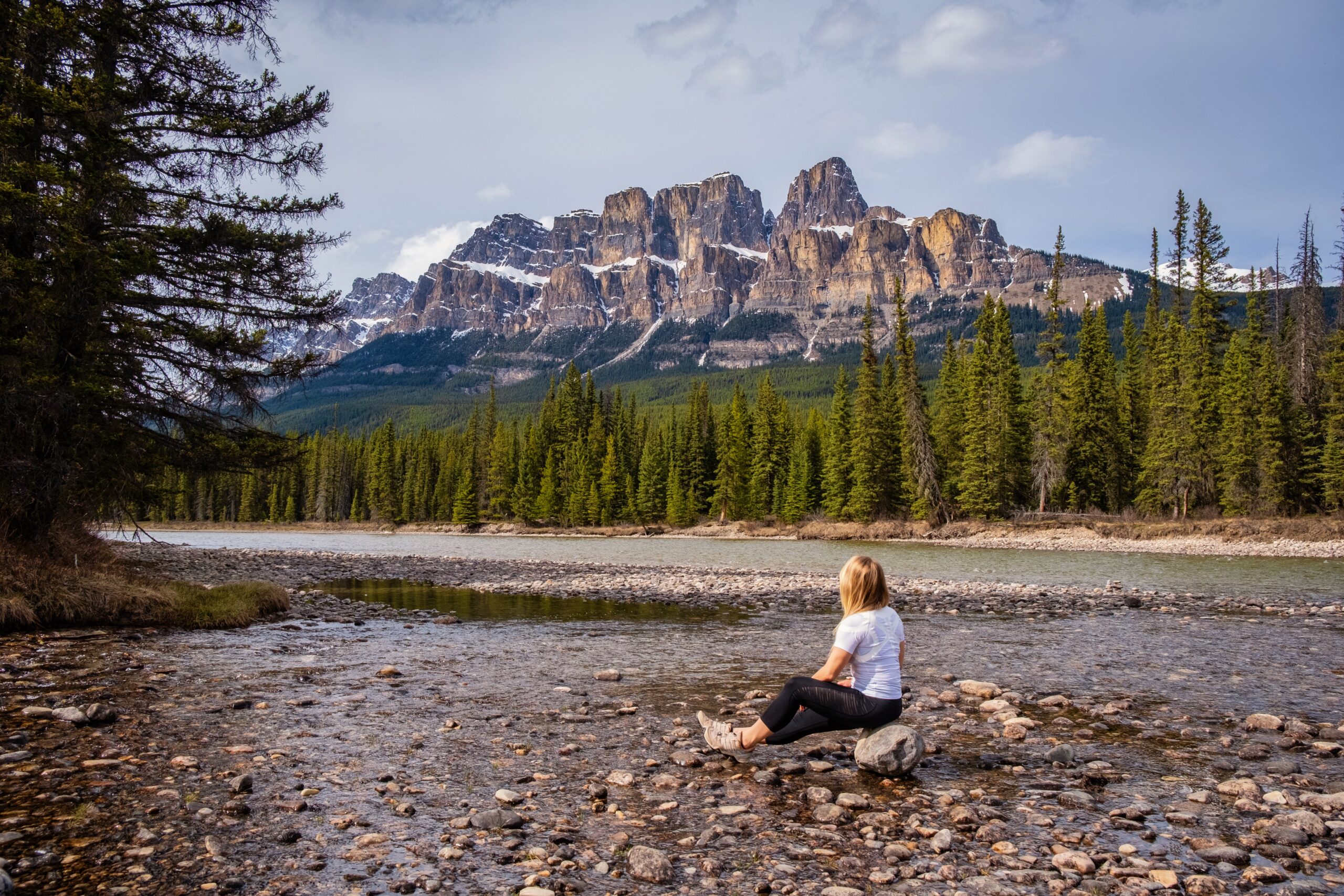
Closed Until Further Notice
Castle Mountain Campground is a great campground between Johnston Canyon and Lake Louise along the Bow Valley Parkway. It’s 34 km from Banff and 28 km from Lake Louise. The campsite operates on a first-come, first-served basis, and there are only 43 sights available.
We love this campground as it’s right next to Castle Mountain and the Bow River, one of Banff’s quieter spots. It’s possible to enjoy a picnic along the Bow River with stunning Castle Mountain views without anyone else around.
If you need something, you are not too far from Castle Mountain Chalets, one of Banff’s best places to stay. I recommend bringing a bike on your camping trip so you can bike the Bow Valley Parkway. Want to venture out on a hike? Rockbound Lake under Castle Mountain is a great one!
Castle Mountain Campground Details
- Operating dates: TBD (Closed until further notice)
- Reservations: First-Come, First-Serve
- Amenities: Flush toilet, hot and cold water, food lockers for walk-in campers, potable water, cooking shelter
- Fees: $24.00 / $11 Firepit
- Number of sites: 43
Lake Louise Campground
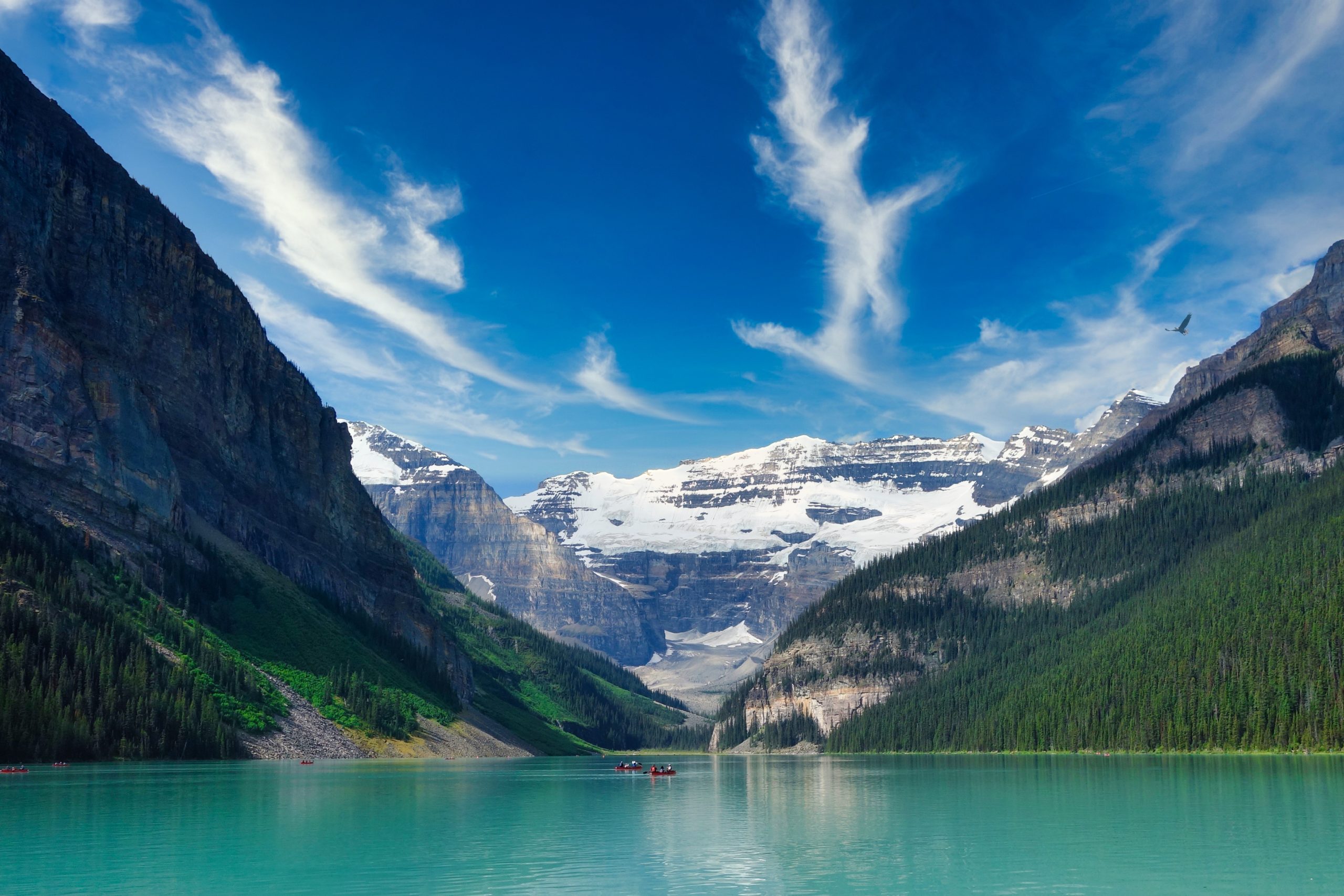
Lake Louise is the crown jewel of the Canadian Rockies, and it’s been drawing visitors to these mountains for over a century. There is some tremendous hiking around Lake Louise, and you can easily entertain yourself for several days. For true Lake Louise camping, this is your only campground.
The campsite is separated into two sections, one for the tent campers and the other for a hard-sided campers area. The tented area has a fence to keep the bears out and protect visitors. You also have great facilities here, with hot showers, flush toilets, and fire pits.
Lake Louise is a breathtaking scene, but visiting the lake can be a pain to secure parking. If you secure a campsite at the Lake Louise Campground, you can take a free shuttle from the campground to the Park & Ride. From there, you will need a reservation on the shuttle to Lake Louise or Moraine Lake. The lake you choose does not matter; a shuttle connects the two lakes once you have a ticket.
Lake Louise Campground Details
- Operating dates:
- Lake Louise Hard-Sided: Year Round (Reservations Required May 17 to September 22)
- Lake Louise Soft-Sided: May 31 to September 22
- Reservations: Required
- Amenities: Hot showers, flush toilet, sanitation dump, disabled access, fire pits, food lockers, potable water, sheltered camp kitchens
- Fees:
- Lake Louise – Unserviced with washroom building having toilets and showers $ 30.50
- Lake Louise – Electrical $36
- Lake Louise – Overflow $12
- Number of sites: 206 tents & 189 trailers
Waterfowl Lakes Campground
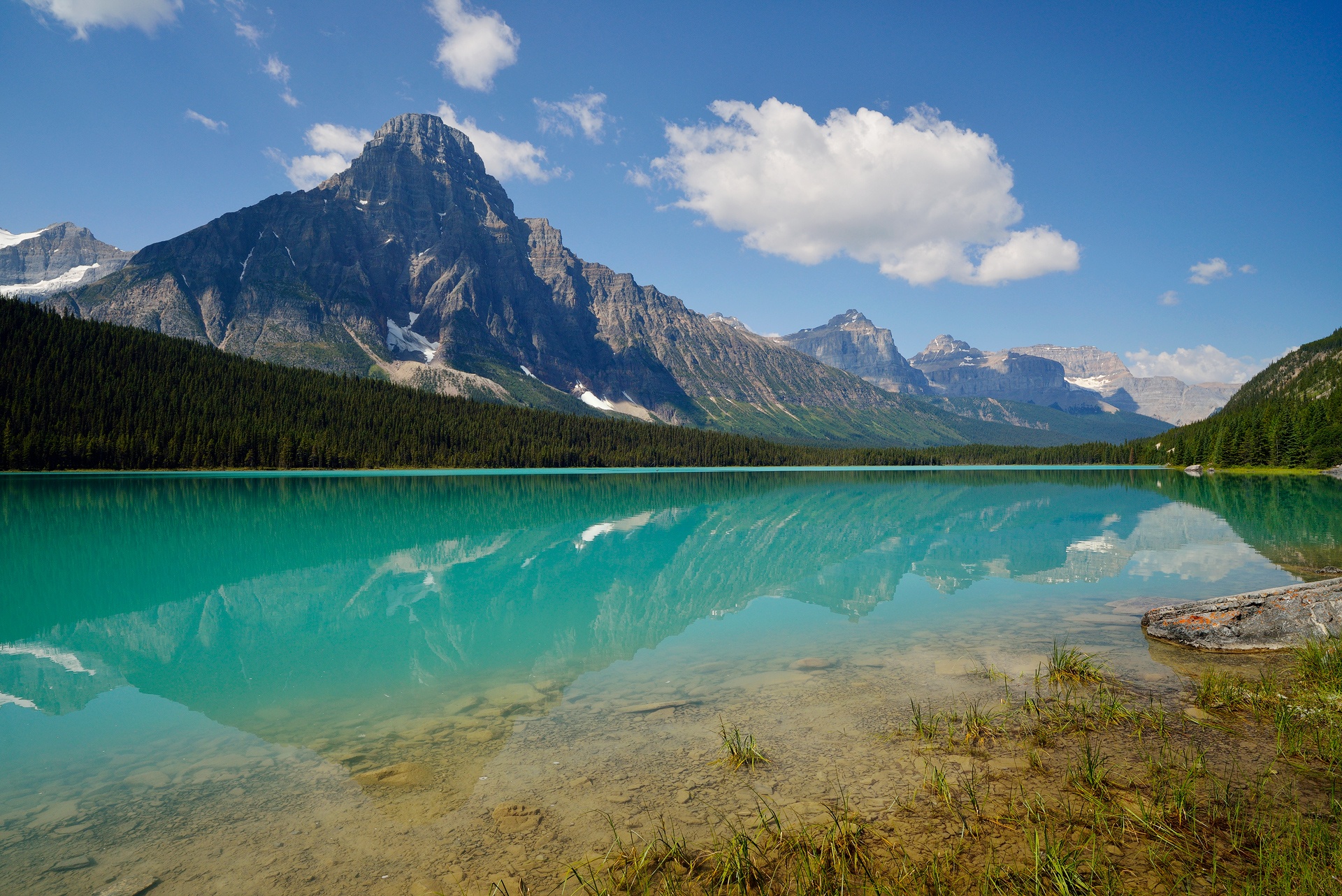
The Waterfowl Lakes are two relaxed lakes in the park that are a bit of a hidden gem. The two lakes are glacial and have a classic blue color that radiates on a sunny day. Its location off the Icefields Parkway provides amazing access to some of the greatest aspects of Banff National Park.
However, as a first-come-first-serve campsite, this place is not so much a secret in the summer months. For scenery, we think this is one of the best campsites in Banff, even if they lack showers. However, heated bathrooms with flush toilets are a pretty nice luxury. If you’re staying here, hike to Chephren Lake nearby!
Waterfowl Lakes Campground Details
- Operating dates: June 20 to September 2
- Reservation: First-come-first-serve
- Amenities: Flush toilet, sani-dump, disabled access, fire pits, food lockers, potable water, sheltered camp kitchens
- Fees: $24.00 / $11 fire permit
- Number of sites: 116
Mosquito Creek Campground
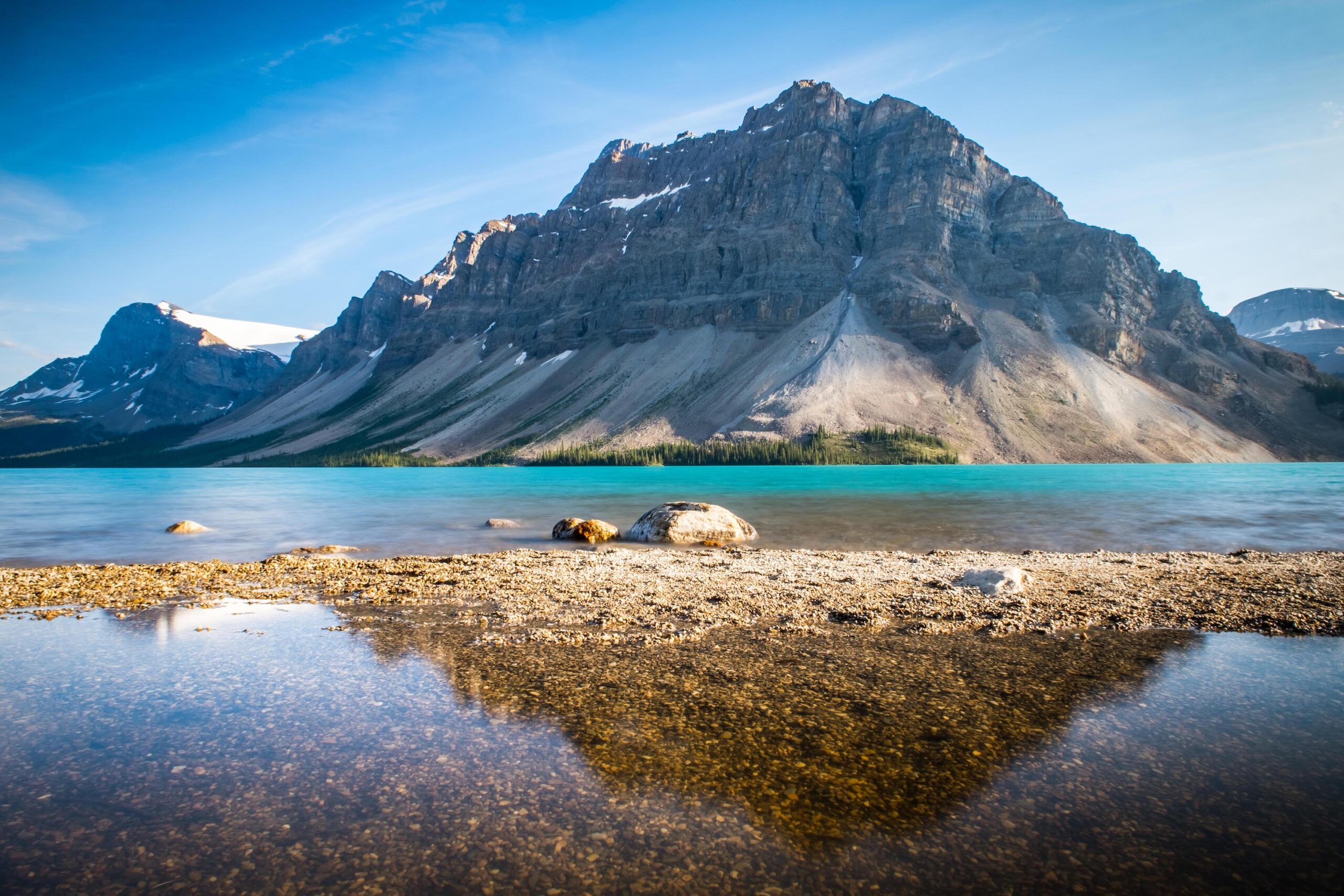
Mosquito Creek Campground is one of the best Banff campsites along the Icefields Parkway. If the name “Mosquito Creek” scares you, don’t worry. The nasty bugs here aren’t any worse than anywhere else in Banff. That said, you should have some bug spray in the summer.
This is an affordable campground that often doesn’t get too busy in the summer months. This is because the campsites are primitive, and the campground has limited facilities. However, it operates on a first-come, first-served basis, so no reservations are required.
It’s a great base if you’re exploring the sights on the Icefields Parkway. Or if you’re heading to Bow Lake and hiking awesome trails like The Onion or Mount Jimmy Simpson.
Mosquito Creek Campground Details
- Operating dates: June 7 to October 14
- Reservation: First-come-first-serve
- Amenities: Solar-treated potable water, greywater sinks are available, one picnic shelter, dry toilet, food lockers
- Fees: $19.75 / $11 fire permit
- Number of sites: 32
Columbia Icefield Campground
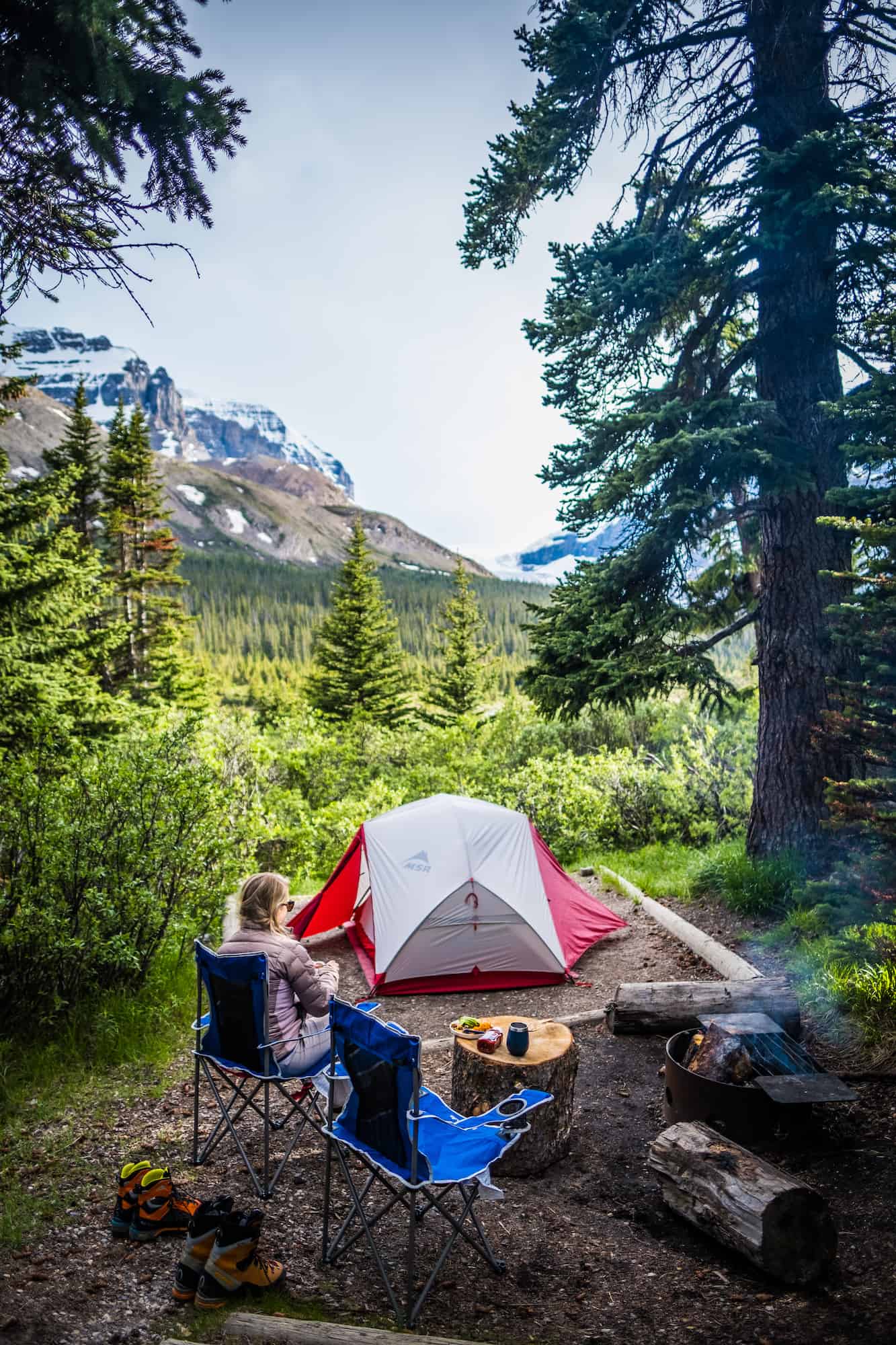
This is probably one of the most difficult campsites to score in the peak summer months. It operates on a first-come-first-serve basis, and it’s tiny. There is not much for facilities here, but the views are unreal if you’re lucky enough to score one of the eight choice sites. This site is limited to tents only, but a small van might be able to pull off a camp here.
From the site, you look out onto the Athabasca Glacier. We got super lucky with this spot by showing up at 8:00 in the morning and catching someone on their way out. We spent three nights climbing the surrounding mountains at this campsite, including Mt Athabasca.
It is technically just out of Banff and in Jasper National Park. For more information on camping in Jasper, you’ll have to read our other post.
Columbia Icefield Campground Details
- Operating dates: June 14 to October 9
- Reservation: First-come-first-serve
- Amenities: Camp kitchen, fire pits, dry toilets
- Fees: Unserviced, with fire pit: $26.25
- Number of sites: 33
Banff Camping and Campgrounds Map
Tips For Camping in Banff
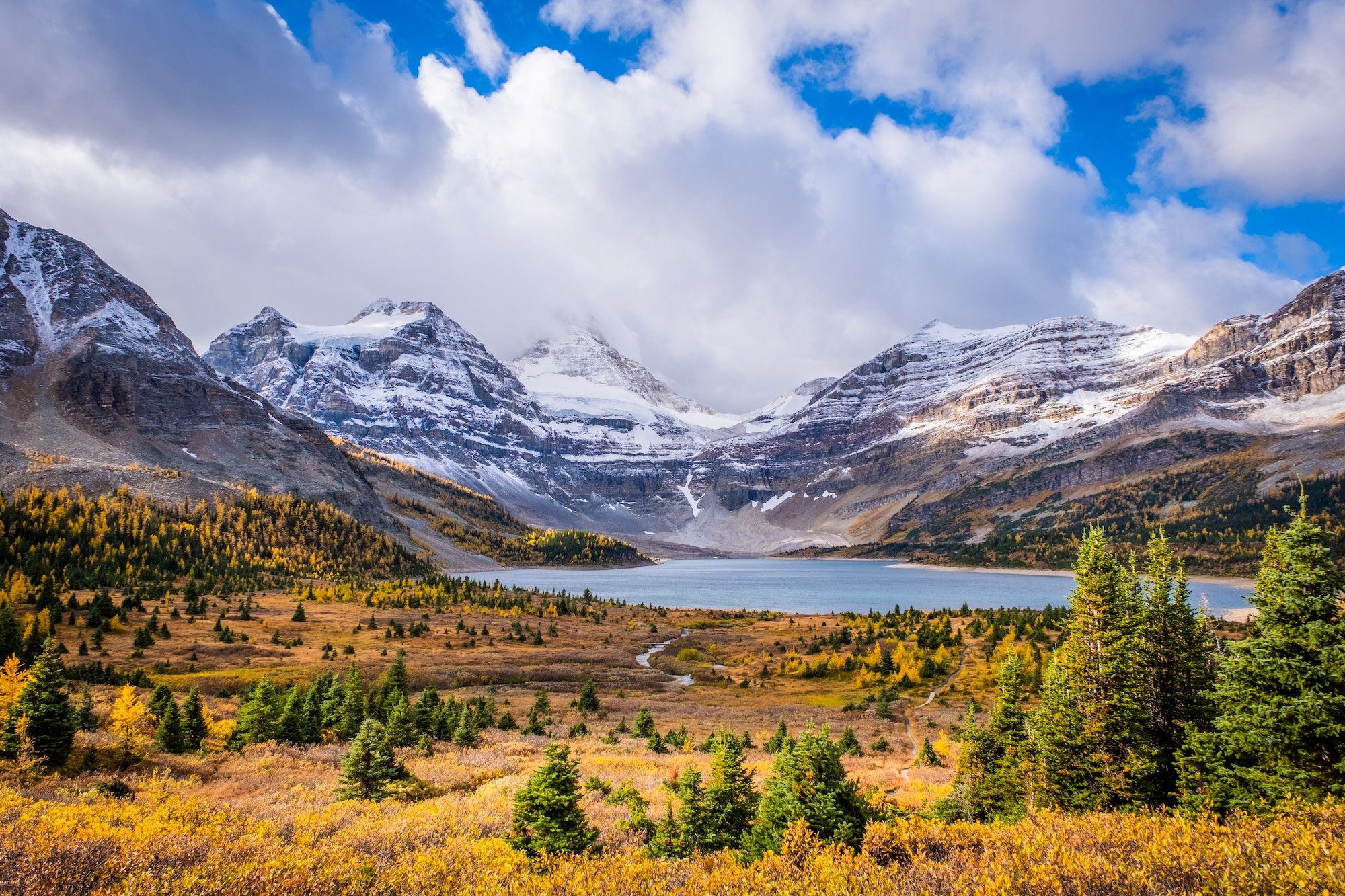
- Be wildlife aware at all times. Please be cognizant of the food around your campsite. Use the bear-proof boxes in camp or store your food in your car and never in your tent. Do not leave your food unattended at any time. Food conditioning kills wildlife!
- There is no free camping in National Parks. You must stay in designated sites or have a permit for every night. Please do not try to stealth camp. Rangers actively patrol and can write tickets for illegal camping or force you to move. There are hefty fines for those that break the rules in the park.
- To grab the first-come-first-serve campsites, you’ll need to arrive early and hope to catch someone on their way out. Often, a line of cars waits to grab a spot, so you’ll have to be pretty lucky. If you get one, camp for a few days and explore the area.
Backcountry Camping in Banff
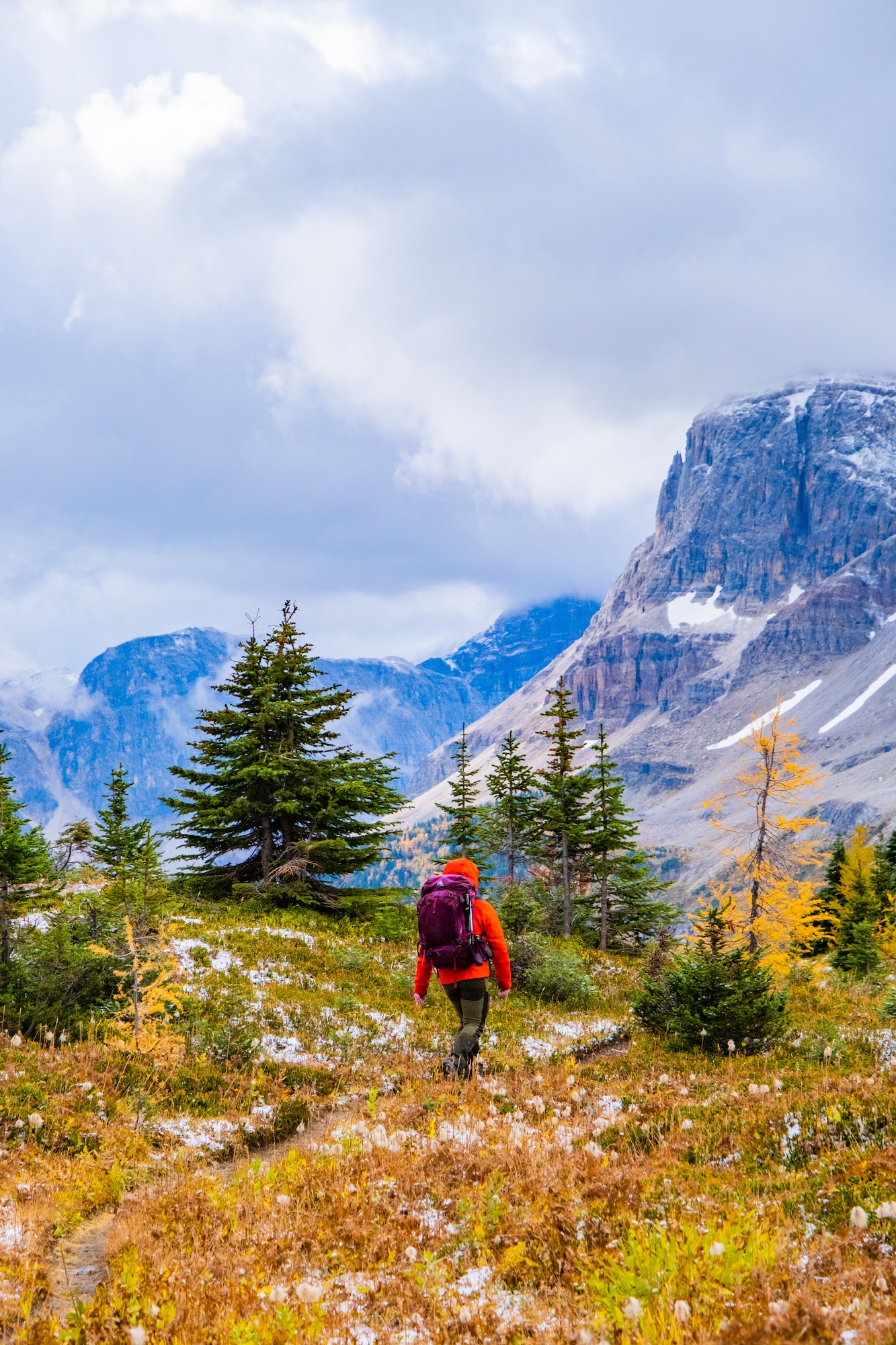
Some of the greatest journeys in Banff, and most splendid scenes occur in the backcountry. These multi-day hikes usually require a long hike to reach the campsite. To spend a night in Banff’s backcountry, you must hold a permit per person per night, which costs $13.50 per person.
Group size is limited to 10 people, and you can only spend three nights in one campsite before being required to move on. There are limited permits and campsites, so you’ll want to reserve your permit well in advance.
Some of Banff’s most popular backcountry campsites are Taylor Lake, Egypt Lake, Alymer Pass, and Paradise Valley.
Reserve your backcountry permit online on the Parks Canada website or by calling: 1-877-RESERVE (1-877-737-3783)
Famous Backcountry Trips Around Banff
- Lake O’Hara
- Rockwall Trail
- Tonquin Valley
- Mount Assiniboine Provincial Park
- Berg Lake Trail
- Skyline Trail in Jasper
- Applebee Dome in The Bugaboos
Hopefully, this helped you determine which Banff campground is best for you. If you have any other questions, leave a comment or see our Canadian Rockies travel guide for more articles about photography spots, lakes, hikes, and everything else.
Plan Your Trip to the Canadian Rockies
- Tours (New in 2024): The Banff Blog is partnering with one of the leading tour companies in Western Canada so readers can experience the magic of the Rockies with other travelers – without having to think about a thing. See all our 2024 tour offerings here!
- Hotels in the Rockies: There are many places to stay, from luxury hotels to wilderness cabins. See all our favorites here.
- Get to Banff or Canmore Without a Car: The Banff Airporter provides fantastic service connecting you from the Calgary International Airport (YYC) to Banff or Canmore.
- Get Around: We suggest renting a car to get around. You can search for rental cars on Rentalcars.com. Or embark on an epic campervan trip. We like to compare prices on Motorhome Republic and Outdoorsy.
- Cheaper Airfare: We also use Going to watch for cheap airfare deals!
- Hop On, Hop Off: This tour is taking Banff by storm. It’s exactly what it sounds like, hop on and off a bus bound for all the best attractions at your own pace!
↓ Join the community ↓
The Banff Blog Facebook Group is your headquarters for Canadian Rockies travel advice and information, including hike and off-season travel information. You can also meet new adventure buddies.
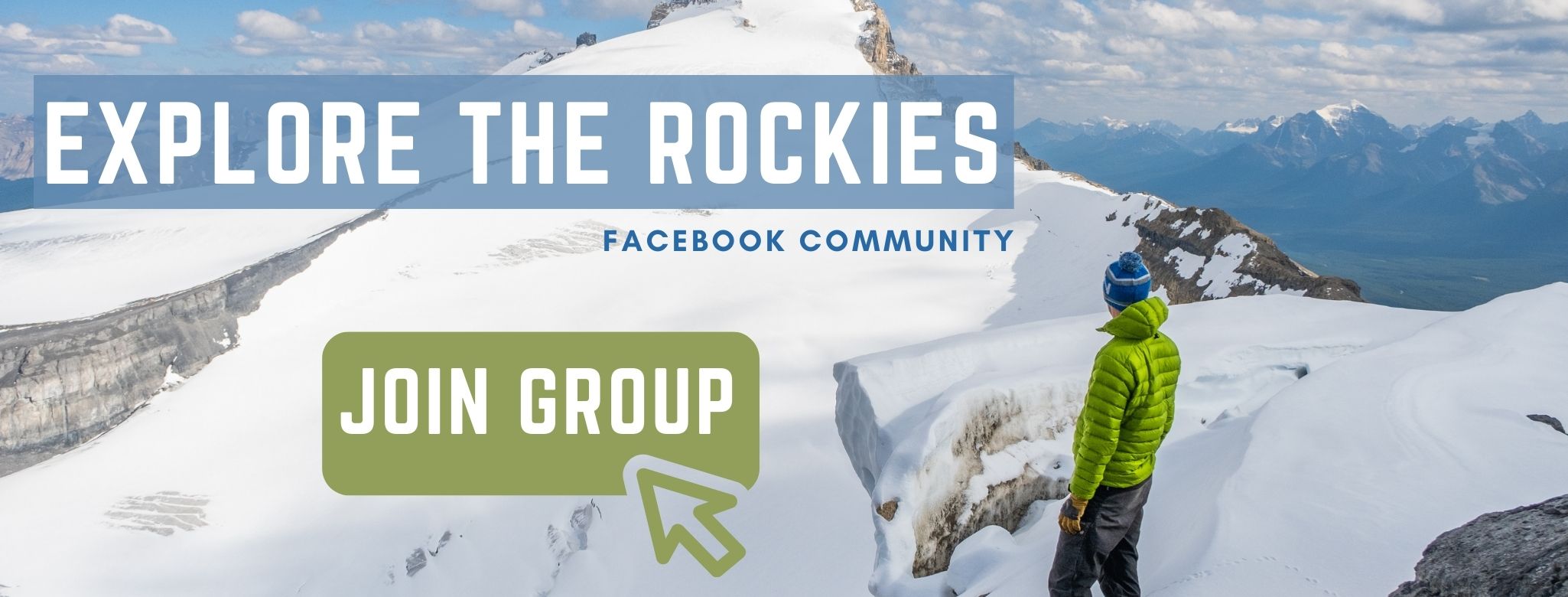
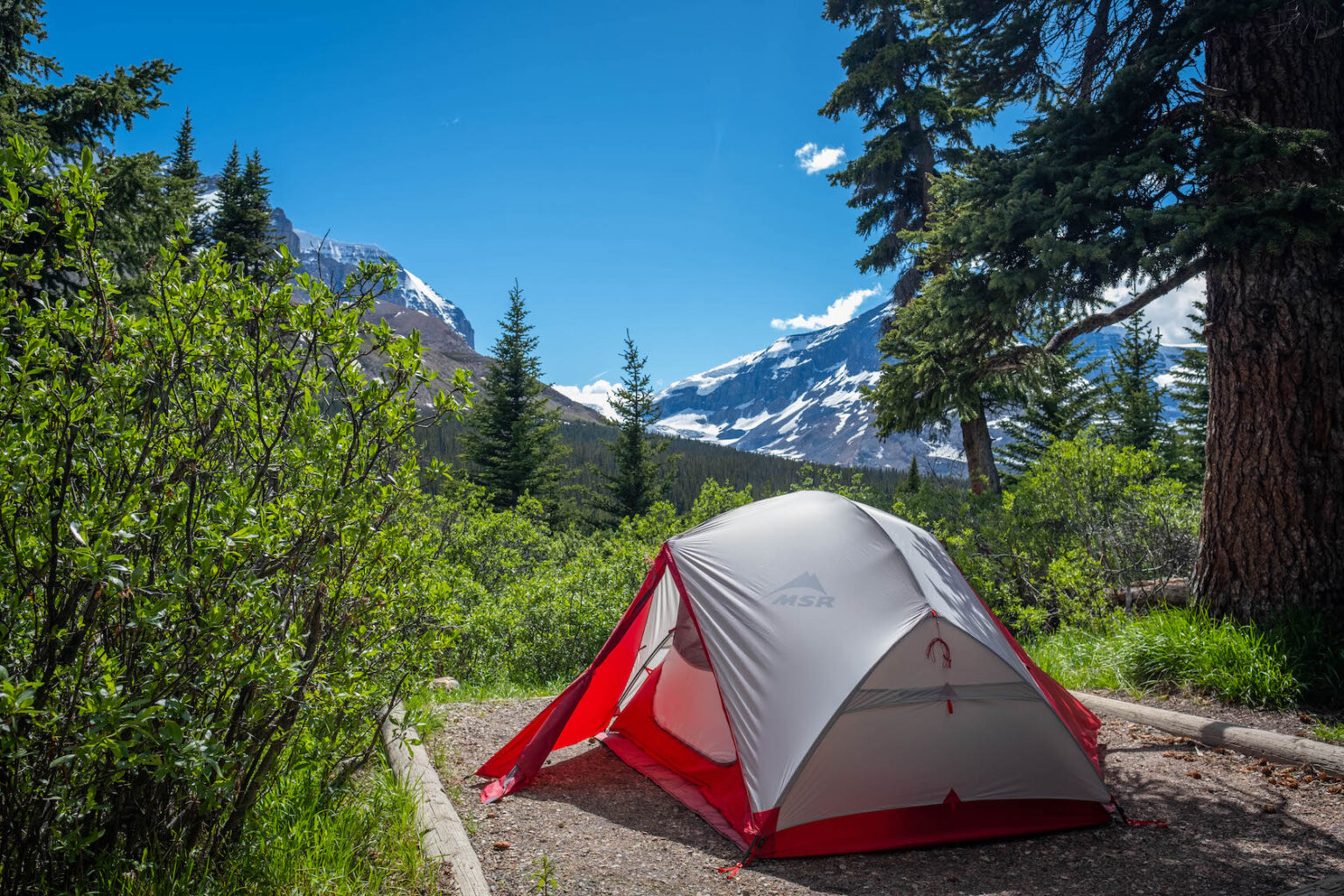
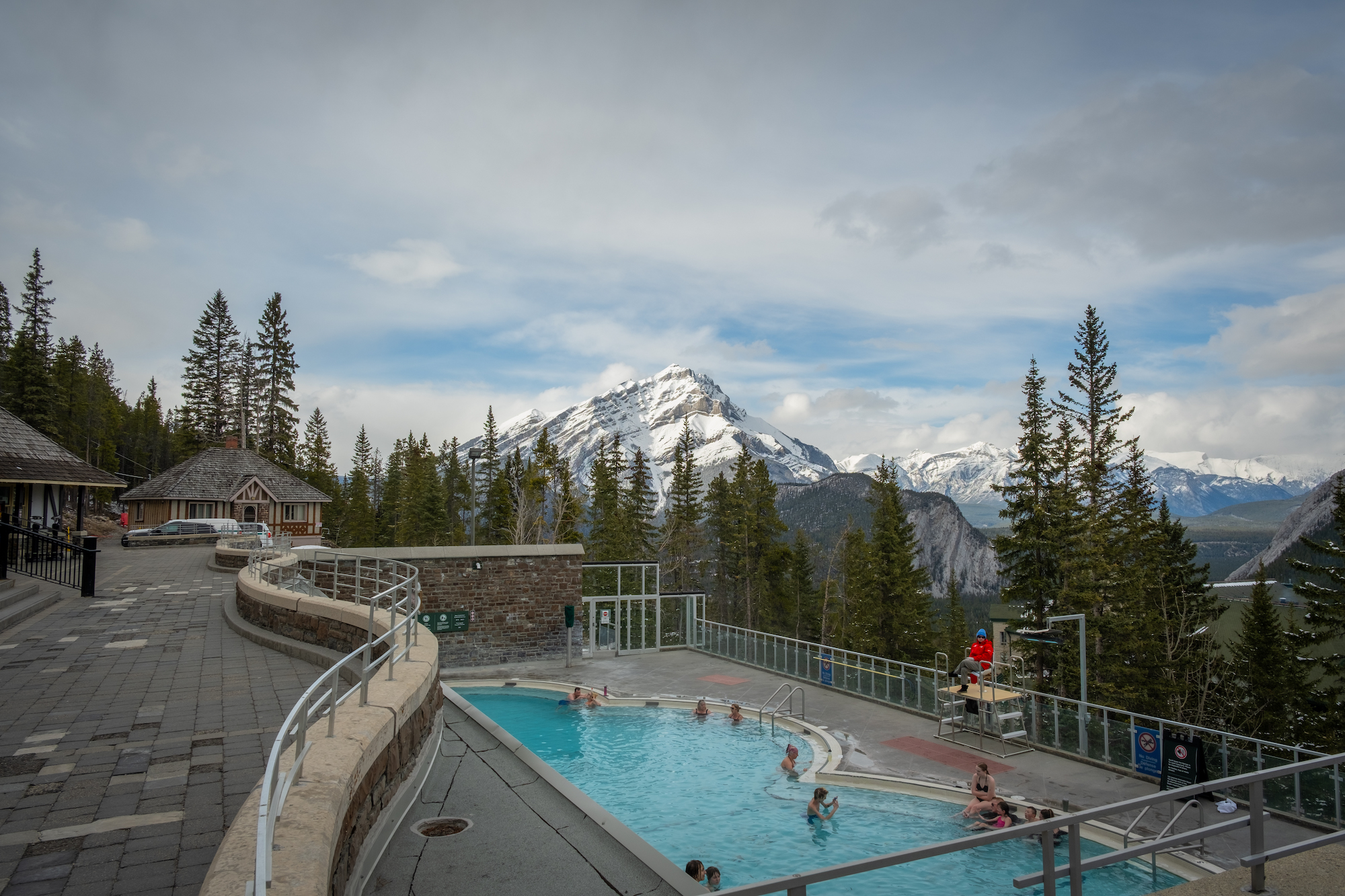
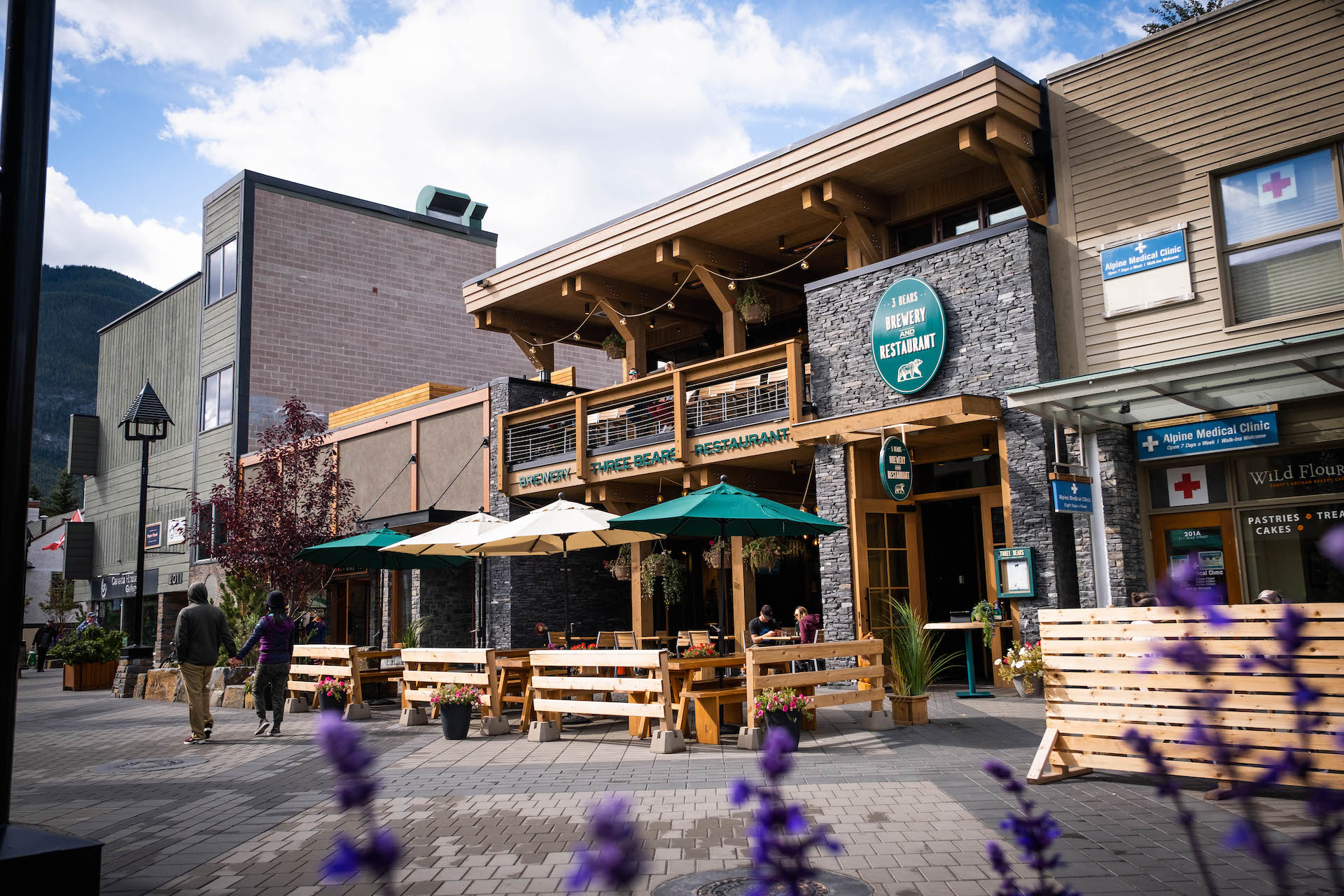
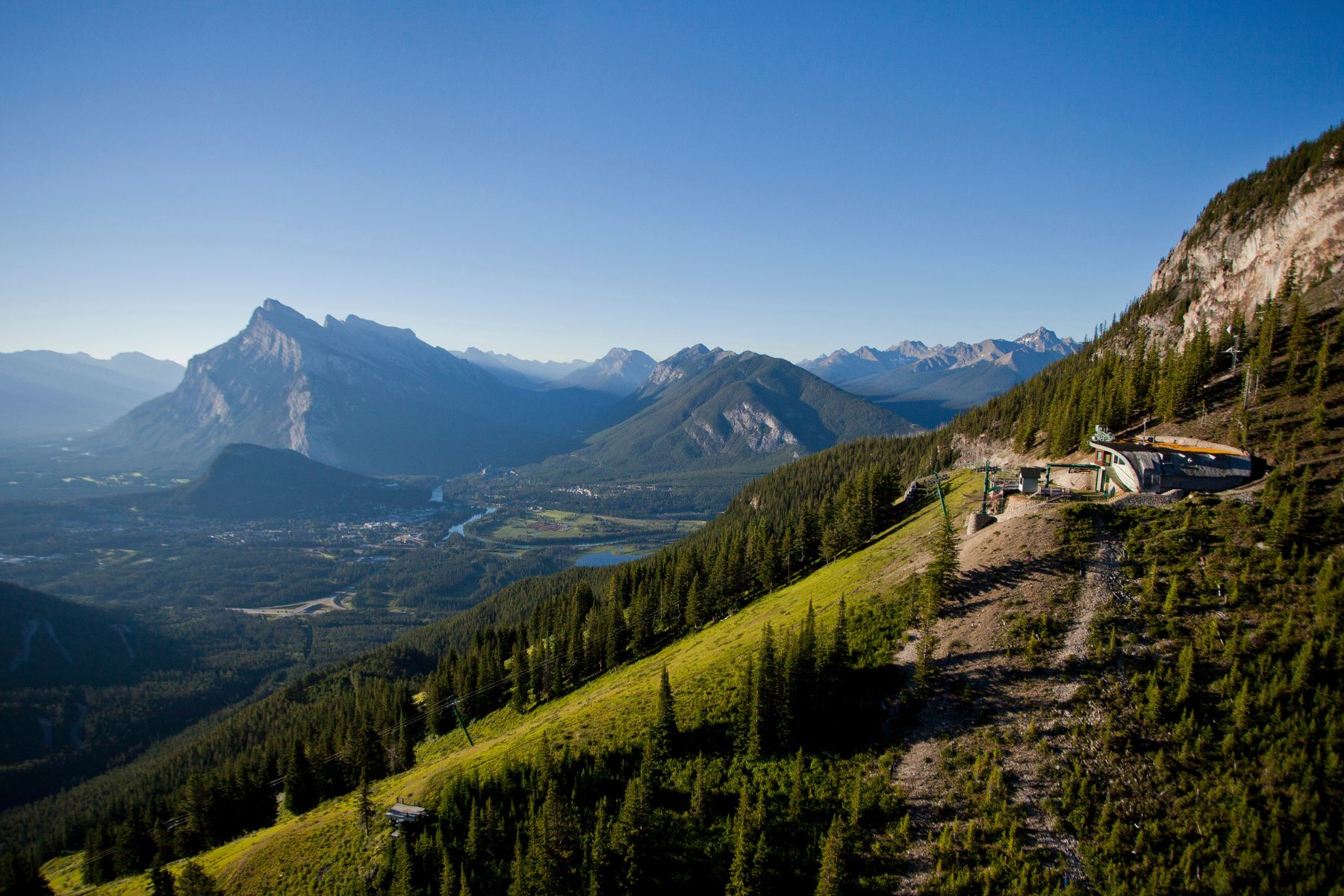
I love your blog. It’s very informative and helpful for camping in banff.
Thank you for all the wonderful campground information. We are planning a trip from Oregon to Banff and Jasper NP’s. I really appreciate all your details for each campground. Crossing our fingers on getting to reserve where we want. 🙂
Dear Natasha and Cameron,
first of all, congratulations on your great blog. It is very helpful in planning our trip. Super nice photos.
We are planning a trip to the Rocky Mountains this summer. First stop will be Banff. There we want to spend two nights at the Two Jack Lakeside campsite. Then it’s on to Lake Louise. There another two nights at the Hard Sided Camping Area (our truck camper is 25 feet).
But I’m not sure if this is a useful option. We want to combine Lake Louise and Morraine Lake with a day hike each.
Would it make more sense to stay in Banff for the four nights and plan Lake Louise as a day trip? Or is the variant two and two nights better? What would you recommend?
After that it should continue over the Icefield Parkway to Jasper.
Thank you and best regards
Claudia from Germany